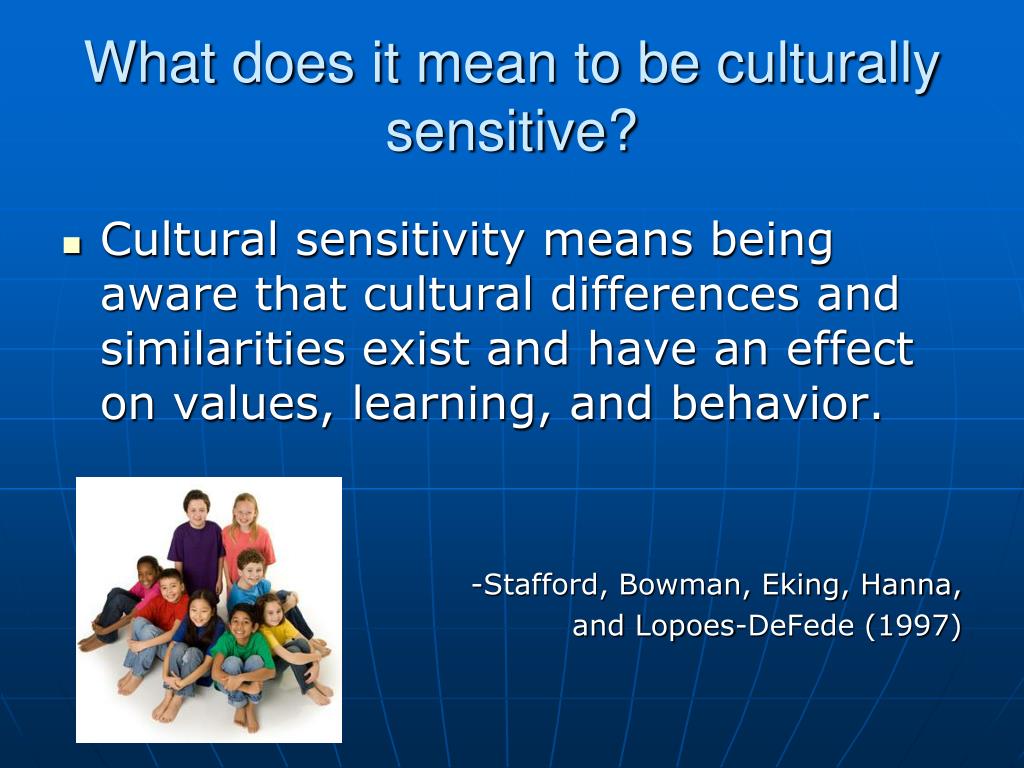

- #CULTURALLY INFORM DEFINITION AND EXAMPLES HOW TO#
- #CULTURALLY INFORM DEFINITION AND EXAMPLES CODE#
- #CULTURALLY INFORM DEFINITION AND EXAMPLES PROFESSIONAL#
#CULTURALLY INFORM DEFINITION AND EXAMPLES CODE#
#CULTURALLY INFORM DEFINITION AND EXAMPLES PROFESSIONAL#
They also understand how their personal experiences and affective reactions influence their professional judgment and behavior. Social workers recognize personal values and the distinction between personal and professional values.
#CULTURALLY INFORM DEFINITION AND EXAMPLES HOW TO#
Social workers understand frameworks of ethical decision-making and how to apply principles of critical thinking to those frameworks in practice, research, and policy arenas. Social workers understand the value base of the profession and its ethical standards, as well as relevant laws and regulations that may impact practice at the micro, mezzo, and macro levels. Berkeley MSW students are assessed throughout the course of their graduate study on progress to achieving each of the following social work competencies established for the Berkeley MSW Program: Competency #1: Demonstrate Ethical and Professional Behavior Once you have developed your question, select a range of material that is appropriate to answer it.ĭiscourse analysis is a method that can be applied both to large volumes of material and to smaller samples, depending on the aims and timescale of your research.The MSW curriculum is organized around a set of social work core competencies, representing the dimensions of social work practice that all social workers are expected to master during their professional training.

To do discourse analysis, you begin with a clearly defined research question. Step 1: Define the research question and select the content of analysis Following these steps can help you avoid pitfalls of confirmation bias that can cloud your analysis. There are many different approaches and techniques you can use to conduct discourse analysis, but the steps below outline the basic structure you need to follow. You make interpretations based on both the details of the material itself and on contextual knowledge. The interaction between people in a conversation, such as turn-taking, interruptions and listener response, can reveal aspects of cultural conventions and social roles.ĭiscourse analysis is a qualitative and interpretive method of analyzing texts (in contrast to more systematic methods like content analysis). Non-verbal aspects of speech, such as tone of voice, pauses, gestures, and sounds like “um”, can reveal aspects of a speaker’s intentions, attitudes, and emotions. Texts can be analyzed in relation to the conventions and communicative aims of their genre (e.g., political speeches or tabloid newspaper articles). The structure of a text can be analyzed for how it creates emphasis or builds a narrative. The way that sentences are constructed (e.g., verb tenses, active or passive construction, and the use of imperatives and questions) can reveal aspects of intended meaning. Words and phrases can be analyzed for ideological associations, formality, and euphemistic and metaphorical content. Critical discourse analysis Level of communication

The selected sources can be analyzed on multiple levels. Instead of focusing on smaller units of language, such as sounds, words or phrases, discourse analysis is used to study larger chunks of language, such as entire conversations, texts, or collections of texts. to build trust, to create doubt, to evoke emotions, or to manage conflict).

It focuses on the social aspects of communication and the ways people use language to achieve specific effects (e.g. Unlike linguistic approaches that focus only on the rules of language use, discourse analysis emphasizes the contextual meaning of language. How is discourse analysis different from other methods?


 0 kommentar(er)
0 kommentar(er)
